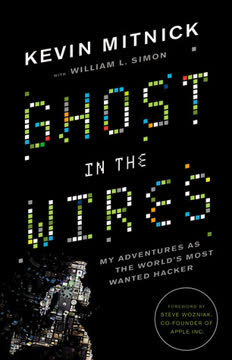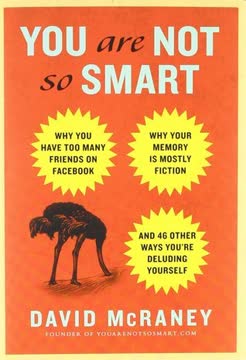つの重要なポイント
1. 男らしさの芸術を受け入れる:伝統的な男性の美徳を再発見する
「男らしさの芸術は再発見される必要がある。」
男性の美徳を取り戻す。 近年、伝統的な男らしさの概念が薄れ、男性であることの意味について混乱が生じている。本書は、失われたまたは忘れられた時代を超えた男性の美徳とスキルを復活させることを目指している。これには以下が含まれる:
- 誠実さと道徳的な品格
- 自立心と実践的なスキル
- 身体的および精神的な強さ
- 騎士道精神と他者への敬意
- リーダーシップと責任感
これらの美徳を受け入れることで、現代の男性は社会に積極的に貢献しながら、男性としてのアイデンティティを維持することができる。これは平等を拒否したり、時代遅れの性別役割に戻ることを意味するのではなく、伝統的な男らしさと現代の価値観のバランスを見つけることを意味する。
2. 紳士的な行動を育む:エチケットと社交術をマスターする
「紳士であることは、単なる行動規範を守ること以上のものである。それは自分自身と他者への深い敬意を持つことだ。」
マナーを洗練させる。 真の紳士は、強さと礼儀を兼ね備え、社交の場で優雅さと敬意を持って行動する方法を知っている。紳士的な行動の重要な側面には以下が含まれる:
- 場面に応じた適切な服装
- 会話の技術をマスターする
- 他者への配慮(例:ドアを開ける、席を譲る)
- 感謝の手紙や手紙の書き方
- 正しい食事のマナー
これらのスキルを身につけることで、他者にとって魅力的になるだけでなく、自尊心と配慮を示すことができる。紳士であることは、弱さや従順さを意味するのではなく、行動と態度を通じて敬意を指揮することを意味する。
3. 強い男性の友情を育む:兄弟の絆を築く
「友人とは、困難な時に頼りにできる男性たちのことだ。世界が敵に回っても、彼らはあなたを支えてくれる。」
意味のある友情を育む。 今日の忙しい世界では、多くの男性が友情を疎かにし、孤立や孤独に陥っている。強い男性の友情を育むことは、感情的な健康と個人的な成長に不可欠である。これらの絆を築き、維持する方法には以下が含まれる:
- 定期的な集まりや活動を企画する(例:スポーツ、キャンプ)
- 脆弱さを見せ、個人的な経験を共有する
- 困難な時にサポートを提供する
- お互いの成功を祝う
友情においては、量よりも質が重要である。多くの表面的な関係を維持するのではなく、信頼できる少数の個人との深く、持続的なつながりを築くことに焦点を当てる。
4. 英雄的な資質を育む:緊急事態や冒険に備える
「タイツを履いていなくても、誰でも英雄になれる。」
勇気と準備を育む。 世界を救う必要はないかもしれないが、緊急事態に対処し、他者を助ける準備ができていることは、男らしさの重要な側面である。これらの英雄的な資質を育む:
- 基本的な応急処置とCPRを学ぶ
- 必要なサバイバルスキルをマスターする(例:火を起こす、コンパスなしでのナビゲーション)
- 他者を助けるために身体的に健康を保つ
- 潜在的な危険を識別するための状況認識を育む
- プレッシャーの下で冷静さを保つための精神的な強さを育む
これらのスキルを磨くことで、予期しない状況に対処し、命を救う可能性が高まる。真の英雄主義は、日常の小さな親切や勇気の行動に現れることが多い。
5. ロマンスの芸術をマスターする:騎士道精神と献身的なパートナーになる
「女性は男性の対等な存在でありながら、名誉と尊敬、そして心ときめくロマンスに値する。」
ロマンチックな伝統を復活させる。 カジュアルな関係や一夜限りの文化が蔓延する時代において、ロマンスの芸術をマスターすることは、他と一線を画し、より充実したパートナーシップを築くための鍵となる。ロマンチックなパートナーであるための重要な側面には以下が含まれる:
- 騎士道精神を実践する(例:ドアを開ける、思いやりのあるデートを計画する)
- オープンで正直なコミュニケーション
- 小さなジェスチャーで感謝を示す
- 献身と忠誠を維持する
- 独立性と親密さのバランスを取る
ロマンスは大きなジェスチャーではなく、愛と尊敬の一貫した行動にある。パートナーを名誉と愛情を持って扱うことで、持続可能な関係の強固な基盤を築くことができる。
6. 父親として優れる:仕事と家庭のバランスを取り、強靭な子供を育てる
「父親であることは、おそらく最も男らしい仕事だ。」
父親業を完全に受け入れる。 優れた父親であるためには、献身、忍耐、そして仕事と家庭生活のバランスを取る意欲が必要である。父親として優れるための重要な側面には以下が含まれる:
- 子供たちの生活に積極的に関与する
- 重要な生活スキルと価値観を教える
- 感情的なサポートと指導を提供する
- 行動を通じてポジティブな例を示す
- 愛と一貫性を持ってしつける
強靭で独立した子供を育てるために:
- 挑戦に直面させ、失敗から学ばせる
- 探索と計画的なリスクテイクを奨励する
- 問題解決スキルを教える
- 成長マインドセットを育む
子供たちに投資する時間は、彼らの人生に持続的な影響を与え、次世代を形作る。
7. 熟練したアウトドアマンになる:自然とつながり、サバイバルスキルを学ぶ
「アウトドアで過ごす時間は、すべての男性にとって不可欠である。それは単なる課外活動ではなく、全体的な男性を養うための重要な部分である。」
自然を受け入れる。 自然とつながり、アウトドアスキルを発展させることは、達成感を提供し、ストレスを軽減し、自立心を養う。必須のアウトドアスキルには以下が含まれる:
- キャンプの設営と火の起こし方
- ナビゲーションとオリエンテーリング
- 食用植物の識別と採取
- 基本的な野外応急処置
- 天気予測
定期的なアウトドア活動は以下の助けになる:
- 人生の課題に対する視点を得る
- 問題解決スキルを発展させる
- 身体的な健康を向上させる
- 冒険心を育む
- 他のアウトドアマンとの友情を築く
週末のキャンプ旅行や長期の野外探検など、自然と再接続し、原始的な自分を再発見するためにアウトドア活動に時間を割く。
8. リーダーシップ能力を磨く:他者を効果的に鼓舞し導く
「真のリーダーシップは、優越感、地位、名声に関するものではない。それは周囲の人々の可能性を明らかにし、解放することに関するものである。」
リーダーシップスキルを発展させる。 効果的なリーダーシップは、家庭から職場まで、あらゆる面で重要である。育むべき主要なリーダーシップの資質には以下が含まれる:
- ビジョンと他者を鼓舞する能力
- 効果的なコミュニケーション
- 意思決定と問題解決のスキル
- 誠実さと責任感
- 共感と感情的知性
リーダーシップを向上させる実践的な方法:
- コミュニティや職場で責任を引き受ける
- 経験豊富なリーダーからのメンターシップを求める
- 偉大なリーダーの生涯と戦略を学ぶ
- パブリックスピーキングとプレゼンテーションスキルを練習する
- 日常生活で模範を示す
リーダーシップは他者を支配することではなく、彼らが最大限の可能性を発揮できるようにすることに関するものである。
9. 道徳的な卓越性を追求する:ベンジャミン・フランクリンの美徳の生活を模範とする
「現代では、美徳は悪評を受けている。それはしばしば宗教的な関心事と見なされるか、不公平に女性的なものとされる。しかし、美徳は決して弱々しいものの領域ではない。」
自己改善を目指す。 ベンジャミン・フランクリンの13の美徳を通じた道徳的な完璧さの追求は、個人的な成長のための実践的な枠組みを提供する。育むべき主要な美徳には以下が含まれる:
- 節制:すべてのことにおいて適度であること
- 沈黙:目的を持って話し、無駄な話を避ける
- 秩序:生活と優先順位を整理する
- 決意:約束を守る
- 倹約:無駄を避け、手の届く範囲で生活する
- 勤勉:勤勉に働き、時間を有効に使う
- 誠実:正直であり、欺瞞を避ける
- 正義:他者を公平に扱い、義務を果たす
- 節度:行動や意見において極端を避ける
- 清潔:個人の衛生と周囲を保つ
- 平静:挑戦に直面しても冷静でいる
- 純潔:性的な節度と忠誠を実践する
- 謙虚:自分の限界を認識し、他者から学ぶ
これらの美徳に焦点を当て、定期的に進捗を評価することで、自己を継続的に改善し、より全体的で立派な男性になることができる。
最終更新日:
FAQ
What's "The Art of Manliness: Classic Skills and Manners for the Modern Man" about?
- Comprehensive Guide: The book by Brett and Kate McKay is a comprehensive guide to mastering traditional skills and manners that define a modern gentleman.
- Multiple Roles: It covers various roles a man assumes throughout his life, such as a gentleman, friend, hero, lover, father, outdoorsman, leader, and virtuous man.
- Rediscovering Manliness: The authors argue that manliness doesn't need to be reinvented but rediscovered, emphasizing virtues and skills that have been lost over time.
- Practical Advice: It provides practical advice and step-by-step guides on everything from dressing like a gentleman to performing a fireman's carry.
Why should I read "The Art of Manliness"?
- Skill Development: The book offers a wealth of knowledge on developing skills that are both practical and character-building.
- Cultural Insight: It provides insight into the cultural and historical aspects of manliness, helping readers understand its evolution.
- Self-Improvement: Readers can benefit from the self-improvement focus, which encourages becoming a better man in various aspects of life.
- Engaging Content: The book is engaging and filled with anecdotes, historical references, and practical tips that make it an enjoyable read.
What are the key takeaways of "The Art of Manliness"?
- Virtues and Skills: Emphasizes the importance of virtues like temperance, silence, and humility, alongside practical skills like changing a tire or starting a fire.
- Role of a Gentleman: Highlights the significance of being a gentleman in modern society, including manners, dress, and behavior.
- Leadership and Responsibility: Encourages taking on leadership roles and responsibilities in personal and professional life.
- Balance and Moderation: Advocates for a balanced life, avoiding extremes, and maintaining tranquility and order.
What are the best quotes from "The Art of Manliness" and what do they mean?
- Roosevelt Quote: "It is not the critic who counts..." emphasizes the value of action and effort over criticism and inaction.
- Franklin's Virtues: "Eat not to dullness; drink not to elevation." highlights the importance of moderation in life.
- Churchill's Wisdom: "You have enemies? Good. That means you've stood up for something, sometime in your life." underscores the importance of standing by one's principles.
- Emerson's Insight: "Good manners are made up of petty sacrifices." suggests that small acts of consideration define true manners.
How does "The Art of Manliness" define a gentleman?
- Dress and Grooming: A gentleman pays attention to his appearance, dressing well and grooming meticulously.
- Manners and Etiquette: He follows traditional manners and etiquette, showing respect and consideration for others.
- Behavior: A gentleman behaves with integrity, treating everyone with kindness and honor.
- Hospitality and Generosity: He is hospitable and generous, always ready to lend a hand or offer a kind word.
What advice does "The Art of Manliness" offer for being a good friend?
- Loyalty and Support: Emphasizes the importance of being loyal and supportive, especially in times of need.
- Communication: Encourages open and honest communication, while also being a good listener.
- Shared Activities: Suggests engaging in shared activities and interests to strengthen bonds.
- Respect and Understanding: Highlights the need for respect and understanding, accepting friends for who they are.
What are some practical skills taught in "The Art of Manliness"?
- Fire Starting: Provides methods for starting a fire without matches, a crucial survival skill.
- Changing a Tire: Offers a step-by-step guide on how to change a flat tire, an essential skill for any driver.
- Shaving Techniques: Teaches traditional wet shaving techniques for a better grooming experience.
- Basic First Aid: Includes instructions on performing a fireman's carry and treating a snakebite.
How does "The Art of Manliness" address the concept of leadership?
- Traits of Leadership: Identifies key traits such as quiet resolution, risk-taking, and sharing rewards with subordinates.
- Decision Making: Encourages making informed decisions and standing by them with confidence.
- Charisma and Influence: Discusses the importance of charisma and how to cultivate it to influence others positively.
- Responsibility: Stresses the importance of taking responsibility for one's actions and decisions.
What does "The Art of Manliness" say about balancing work and family?
- Family Time: Advocates for setting aside dedicated family time, such as family dinners and outings.
- Work-Life Balance: Encourages finding a balance between work responsibilities and family commitments.
- Involvement: Stresses the importance of being actively involved in children's lives and activities.
- Communication: Highlights the need for open communication with family members to maintain strong relationships.
How does "The Art of Manliness" suggest improving one's character?
- Virtue Chart: Recommends using a virtue chart to track personal progress in living a virtuous life.
- Self-Reflection: Encourages regular self-reflection to identify areas for improvement.
- Continuous Learning: Suggests continuous learning and self-improvement as lifelong pursuits.
- Role Models: Advises looking up to historical figures and role models for inspiration and guidance.
What role does "The Art of Manliness" assign to outdoor activities?
- Connection with Nature: Emphasizes the importance of connecting with nature for mental and physical well-being.
- Skill Development: Encourages developing outdoor skills like camping, fishing, and hiking.
- Adventure and Exploration: Advocates for adventure and exploration as a means of personal growth.
- Stress Relief: Highlights the stress-relieving benefits of spending time in the great outdoors.
How does "The Art of Manliness" approach the topic of love and relationships?
- Chivalry and Respect: Stresses the importance of chivalry and respect in romantic relationships.
- Communication: Encourages open and honest communication with partners.
- Commitment: Highlights the significance of commitment and loyalty in maintaining strong relationships.
- Romantic Gestures: Suggests incorporating romantic gestures and traditions to keep the relationship vibrant.
レビュー
本書『The Art of Manliness』は賛否両論の評価を受けており、平均評価は5点満点中3.91点である。肯定的なレビューでは、マナー、スキル、自己改善に関する実践的なアドバイスが称賛されている一方で、批判的な意見としては、内容が時代遅れで表面的だとされている。伝統的な価値観や男らしさの強調を評価する人もいれば、それを問題視したり無関係だと感じる人もいる。本書は、身だしなみ、エチケット、人間関係、アウトドアスキルなどのトピックを扱っている。読者の間ではその有用性について意見が分かれており、ある人は本書を刺激的だと感じる一方で、他の人は陳腐で理想主義的すぎると一蹴している。
Similar Books














